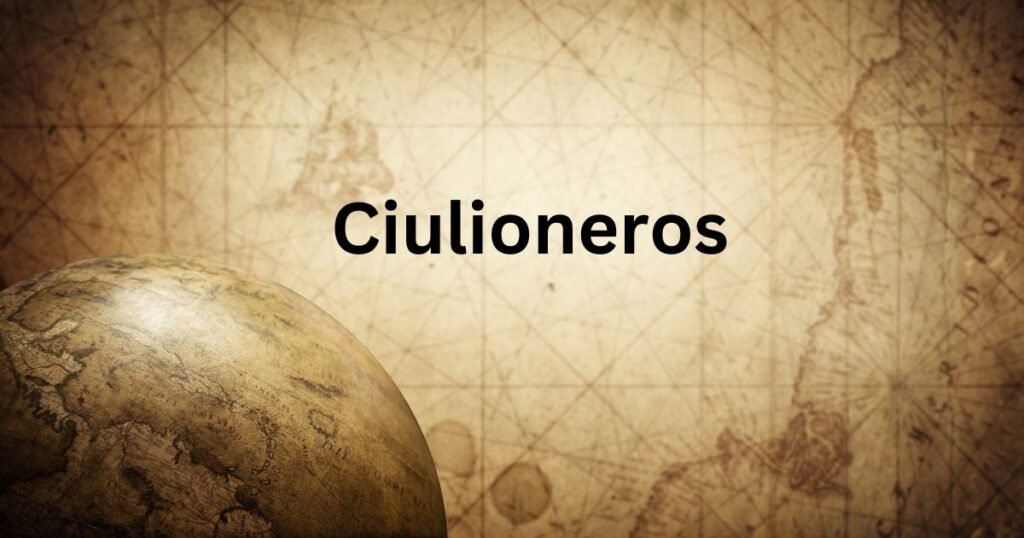Introduction
In the heart of cultural diversity lies the Ciulioneros community, a group renowned for their vibrant traditions and deep-rooted heritage. Their way of life offers a profound connection to nature and a commitment to preserving ancestral customs. This article delves into the rich tapestry of the Ciulioneros‘ history, cultural practices, and the challenges they face in the modern world.
Origins and Historical Background
The Ciulioneros trace their lineage back centuries, with origins deeply intertwined with the lush landscapes they inhabit. Historical records suggest that their ancestors migrated from neighboring regions, establishing communities rich in cultural exchange. Over time, they interacted with other indigenous groups and European settlers, experiences that, while sometimes fraught, shaped their resilient identity. Key events, such as territorial disputes and colonization, significantly influenced their social structure and traditions, leading to a culture that adapted while preserving its essence.
Cultural Significance and Practices
The Ciulioneros‘ culture remains a cornerstone of regional identity, influencing neighboring communities in art, music, and literature. Their communal approach to life is evident in rituals and customs that foster unity. Through these practices, they have become symbolic representatives of indigenous culture, ensuring their unique way of life remains relevant. Their contributions to cultural preservation have been acknowledged both locally and globally, making them key figures in safeguarding indigenous heritage.
Connection to Nature and the Land
For the Ciulioneros, the land is more than just a place of residence; it is a source of sustenance, identity, and spiritual power. Their agricultural practices respect the cycles of nature, and natural landmarks hold significant places in their myths and beliefs. Rituals related to fertility, rain, and harvest underscore their deep connection to the environment, reflecting a harmonious relationship with the natural world.
Traditional Attire and Artistic Expression

Traditional Ciulionero attire is crafted from natural materials like cotton, animal skin, or plant fabrics. Distinctive features include thick stripes, brilliant color combinations, and symbolic embroidery, each element reflecting different stages of life and spirituality. Garments worn during rituals and ceremonies often serve to connect the earthly realm with the spiritual world. Ornaments such as necklaces, bracelets, rings, and headgear carry cultural and superstitious significance, believed to protect wearers from evil spirits and attract fortune.
Music, Dance, and Festivities
Music and dance are integral to Ciulionero culture, serving as expressions of identity and community cohesion. Traditional instruments and rhythmic patterns accompany dances that narrate historical events, celebrate harvests, or honor deities. Festivals and celebrations are vibrant affairs, showcasing their rich heritage through elaborate performances, traditional attire, and communal feasting. These events not only preserve cultural practices but also strengthen social bonds within the community.
Social Structure and Leadership
The Ciulioneros maintain a social structure that emphasizes communal decision-making and respect for elders. Leadership roles are often occupied by individuals chosen for their wisdom, experience, and ability to uphold cultural values. This structure ensures that traditions are preserved and that the community operates harmoniously. Elders play a crucial role in mediating conflicts, guiding younger members, and leading ceremonies, thereby sustaining the cultural fabric of the Ciulioneros
Challenges in the Modern Era
Despite their rich heritage, the Ciulioneros face numerous challenges in today’s rapidly changing world. Globalization, environmental degradation, and external cultural influences threaten their traditional way of life. Efforts to preserve their language, customs, and land rights are ongoing, with the community actively engaging in initiatives to document their history, promote sustainable practices, and educate younger generations about their heritage. Collaborations with external organizations have also been established to support these endeavors and ensure the survival of their cultural identity.
Conclusion
The Ciulioneros exemplify the resilience and richness of indigenous cultures. Their unwavering commitment to preserving their heritage amidst modern challenges offers valuable lessons in sustainability, community cohesion, and the importance of cultural diversity. As guardians of their cultural legacy, the Ciulioneros continue to inspire and educate, ensuring that their traditions endure for future generations.
